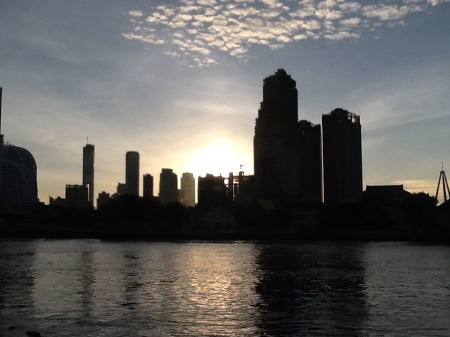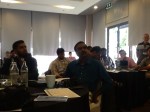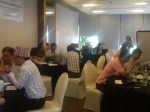We had a brief stint in beautiful Bangkok recently. It was for a week-long Seminar-Workshop conducted by Habitat For Humanity International (Asia-Pacific) for operations and construction reps in the Asia-Pacific region. The week-long course was entitled: Disaster Risk Reduction and Response & Construction and Appropriate Technologies Workshop. And we had a great time learning, bonding and seeing the sights of Bangkok. Mixing business with pleasure, that’s such a great way to learn.

Habitat’s main mandate is to address the problem of substandard or poverty housing that is prevalent in Third World countries around the globe. However, it not only seeks to address this deficiency, it also seeks to reduce disaster risk, and have thus committed to build back better and safer shelters and homes. Over the years, Habitat has been building homes in more than 20 countries in the Asia-Pacific region. But with the uptrend in disaster risks, plus the rising problems associated with climate change and rapid urbanization, Habitat recognizes the need to scale up the quality and impact of its programs, as well as the need to strengthen the capacities of the Asia-Pacific organization.
With the two recent disasters in the region necessitating big disaster response operations – the Nepal earthquake and Cyclone Pam in Vanuatu – it is imperative that we prepare accordingly for the possibility of such calamities. The scale of the incoming tragedies may vary, but the preparations will have to be in place early on in order to save time and effort, and ultimately, save precious lives. Hence, Habitat International is striving to scale up the quality and impact of its programs by seeking to acquire an integrated approach to build safer homes and resilient communities in the region.
The Workshop was a wonderful eye-opener for us. It increased our understanding on the concepts and framework on safer and resilient housing, and its corelation with Disaster Risk Reduction (DRR) and Climate Change Adaptation (CCA) measures. It provided us more insights on new and appropriate technologies in construction, with emphasis on the use of indigenous materials. It enhanced our understanding on Habitat SOPs and DR practices, particularly in situations that need urgency and immediate action. It appraised us on Habitat’s Disaster Risk Reduction and Response (DR3) strategy: Pathways to Permanence. Finally, it provided us a great venue to exchange ideas, learn from each other’s experiences and prepare together for any disaster that may occur in the Asia Pacific Region.
Thanks, Habitat, for the great learning experience! Thanks too to everyone for the warmth of your friendship, and the great insights. Till we meet again.















Great photos, I had to look twice at the cat.
LikeLike
Thanks, Mike! Saw that at the Grand Palace attractions. Everyone was amused when she suddenly came out of one of the small facsimile castles they had built.
LikeLiked by 1 person
I bet they were. That was a priceless keepsake.
LikeLiked by 1 person
A lucky shot. But I’m slowly learning to shoot more pics, be more adventurous. Thanks again, mate.
LikeLiked by 1 person
The food and the skyline looks amazing! Bangkok is one of the cities to visit in our list if we get the chance to travel abroad.
LikeLike
While not in direct reply to your story, I came across this photo not usually stumbled upon – at least for me. https://youtu.be/zIEIvi2MuEk
LikeLike
merry christmas in advance, koji! thanks for the video!
LikeLiked by 1 person
Happy early Christmas to you, sir. My apologies but I had thought the link I copied was one to a photo of the Filipinos stateside and not a video!
LikeLike
Pls do send them over. I’d love to see that.
LikeLike
I came across another article you a be interested in, sir. http://priceonomics.com/how-filipino-soldiers-were-written-out-of-the/
LikeLike
thanks, koji! that’s true, we have a lot of veterans here who had a raw deal from the US govt. pity really.
LikeLiked by 1 person